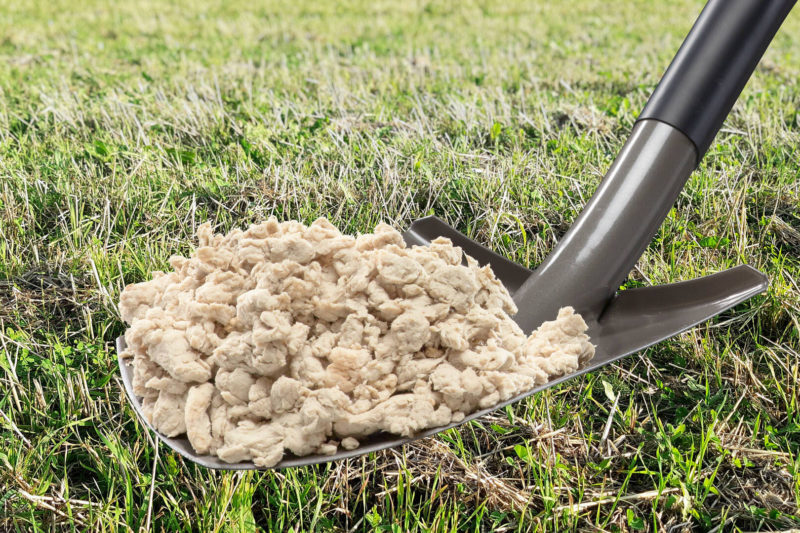
Forest industry sidestreams are assuming an increasingly important role for the sector’s future. The industrial use of sidestreams means that the timber derived from fellings finds a more complete and profitable use. We listed six products that are based on forest industry sidestreams and replace fossil raw materials.
From paperboard mill to fields
Metsä Board, a subsidiary of Metsä Group, and Soilfood Oy convert sidestreams from paperboard production for use in soil improvement. Their wood-based fibre product increases the content of organic matter in arable land and improves its water retention, as well as binding carbon in the soil.
In addition, the soil-improving fibres help to protect watercourses, as they can reduce the leaching of phosphorus from fields by up to one half. Soilfood collects the sidestreams from the Metsä Board mill twice a day, and they are also used in energy production, landscaping and earthworks.

’There has been a clear increase in the demand for recycled nutrients and soil improvement agents in recent years. At the moment, the expansion of this market is mainly constrained by the availability of raw material,’ says Sampo Järnefelt, Chief Commercial Officer of Soilfood in a press release.
The collaboration started in connection with a research project of Natural Resources Institute Finland (Luke). aimed at reducing the leaching of nutrients from fields to watercourses. The wood fibre is also used in energy production and earthworks, such as noise barriers and the landscaping of landfill sites.
Battery production enters the bio era
Battery production will soon enter the bio era when most of the anode material needed in batteries can be produced from a bio-based raw material called dry carbon. It is made from lignin, a by-product of the pulp process and one of the biggest sources of renewable carbon in the world.
Situated in Kotka on the south coast of Finland, Stora Enso’s Sunila mill is the world’s largest producer of extra dry lignin. Until fairly recently, sidestreams such as lignin were burned for energy.
Lignin replaces the non-renewable graphite used in batteries. A lignin battery can be charged up to 2–3 times faster than a conventional graphite battery. The new technology also allows a greater energy density, reducing the need for charging and consequently the number of charging points and the technology required for them.
It is estimated that in 2030, the annual demand for anode materials in Europe will be about one million and globally four million metric tons.

Renewable energy from pellets
Sidestreams from the sawmill industry are utilized to make pellets at Stora Enso’s pellet plant in Varkaus, Eastern Finland, and the company’s six other facilities in Sweden, Latvia, Estonia and the Czech Republic.
Sawdust, dry chips and shavings left over from graded timber from sawmills are converted into energy pellets used, among others, in district heating plants, greenhouses and manufacturing facilities. As renewable energy, the use of pellets in heating is increasing, and they can replace fossil energy sources, such as coal and oil.
In the process the wood is ground into a homogeneous mass and, where necessary, mixed with starch and water to improve stability. The principal adhesive in the pellets is lignin.

Lignin to glue plywood
In plywood production, the oil-based phenol in the adhesive can be replaced by lignin, a component of wood available as by-product of the pulp process.
UPM has long been developing a more eco-friendly adhesive technology. The properties of plywood products using this technology are on a par with those manufactured with conventional methods.
’Developing an adhesive technology using lignin has been a long-term goal for us. We have now achieved a breakthrough that is the most significant innovation in plywood adhesives in five decades,’ said Susanna Rinne, Vice President (Strategy and Business Development) at UPM Plywood.
Transport fuel from pulp mill
Another by-product of the pulp process is crude sulphate methanol, which can be processed into biomethanol. This, in turn, can be used as a component of biofuels suitable for use in vehicles.
The raw material is produced by Metsä Group at its Äänekoski facility in Central Finland. It will be processed further by Weolia, who are currently constructing a biomethanol plant adjacent to Metsä Group’s facility. Production is scheduled to begin in 2024.
’The pulp industry is sometimes thought to be conservative, but pulp production actually facilitates new product ideas such as those based on biochemicals,’ says Mikael Lagerblom, Vice President (Sales Europe) at Metsä Fibre, to Metsä Group’s customer magazine Fibre.
Adhesive labels from leftovers of pulp process
UPM’s adhesive labelstock is made of leftovers from the pulp process. The material has the exact same properties as fossil-based plastics. The labelstock manufacturing process uses UPM’s wood-based naphtha, made from tall oil produced in connection to the pulp process.
This innovation is based on consumer demand for packaging solutions where traditional fossil-based plastics are replaced by sustainable materials.
